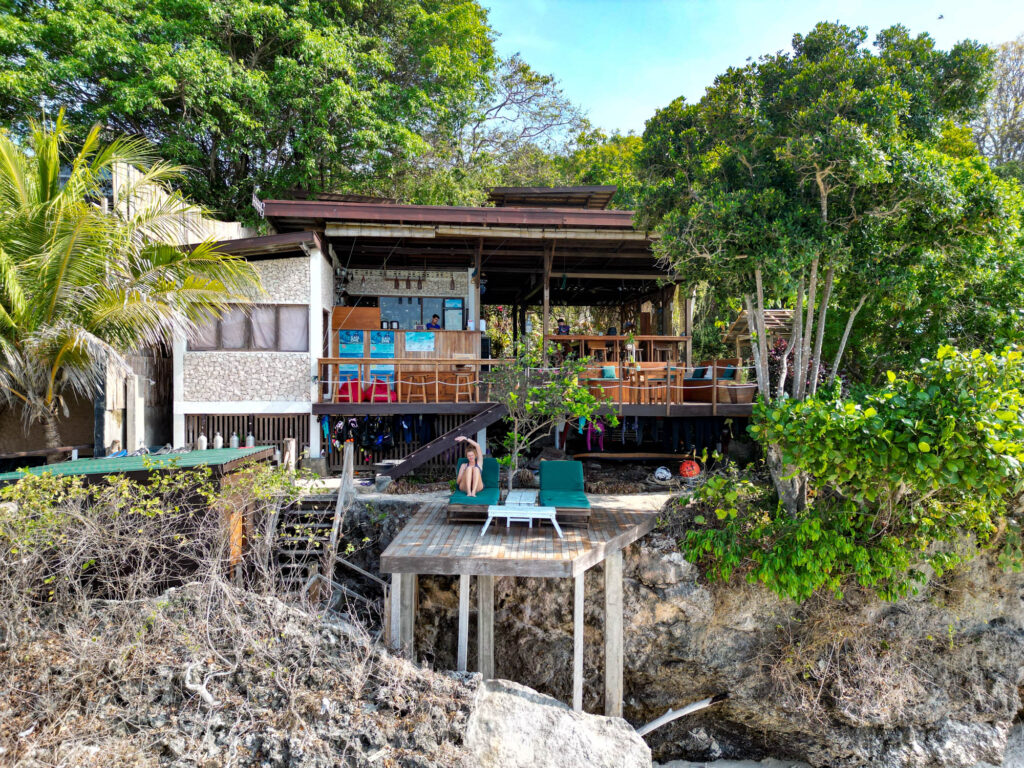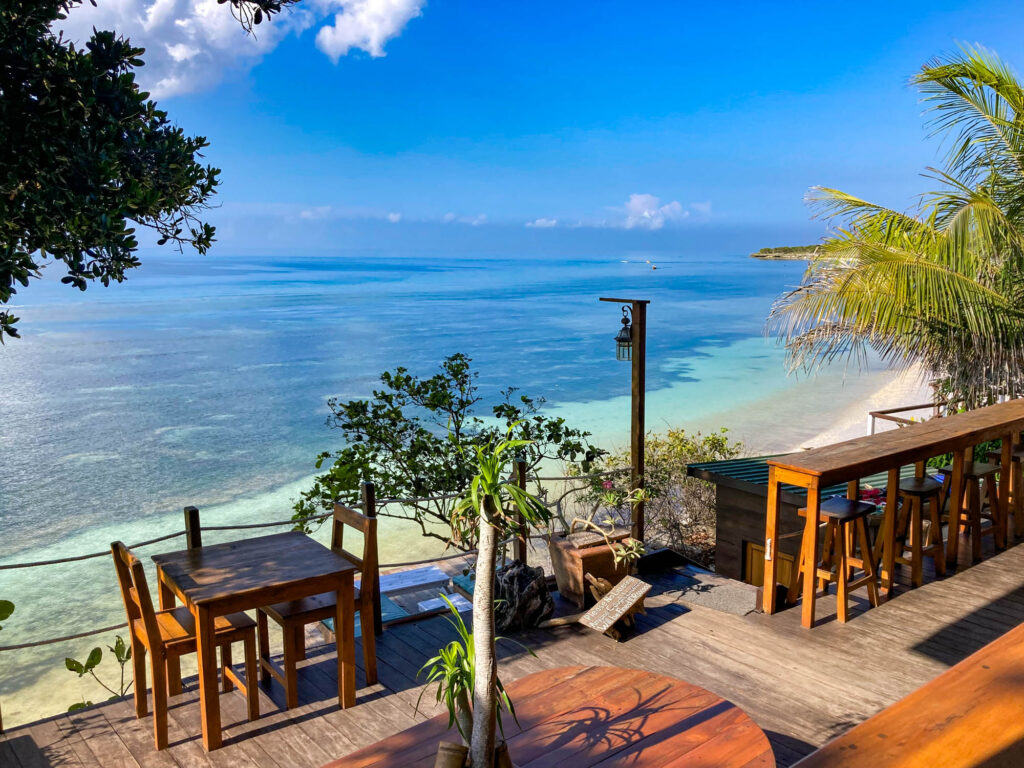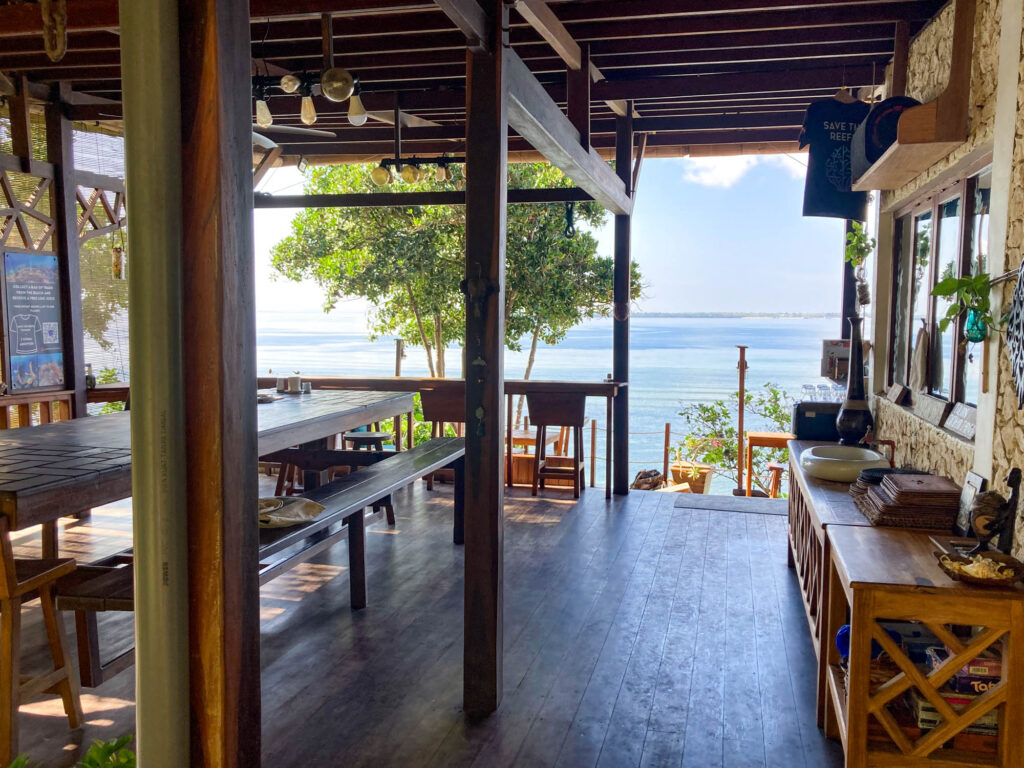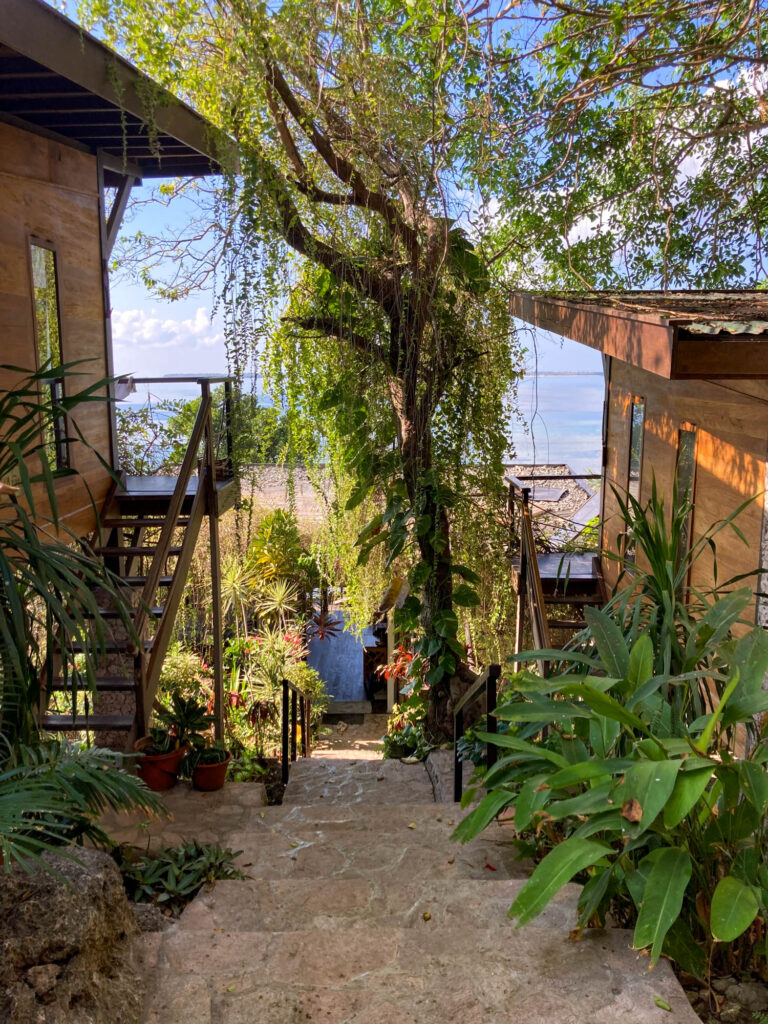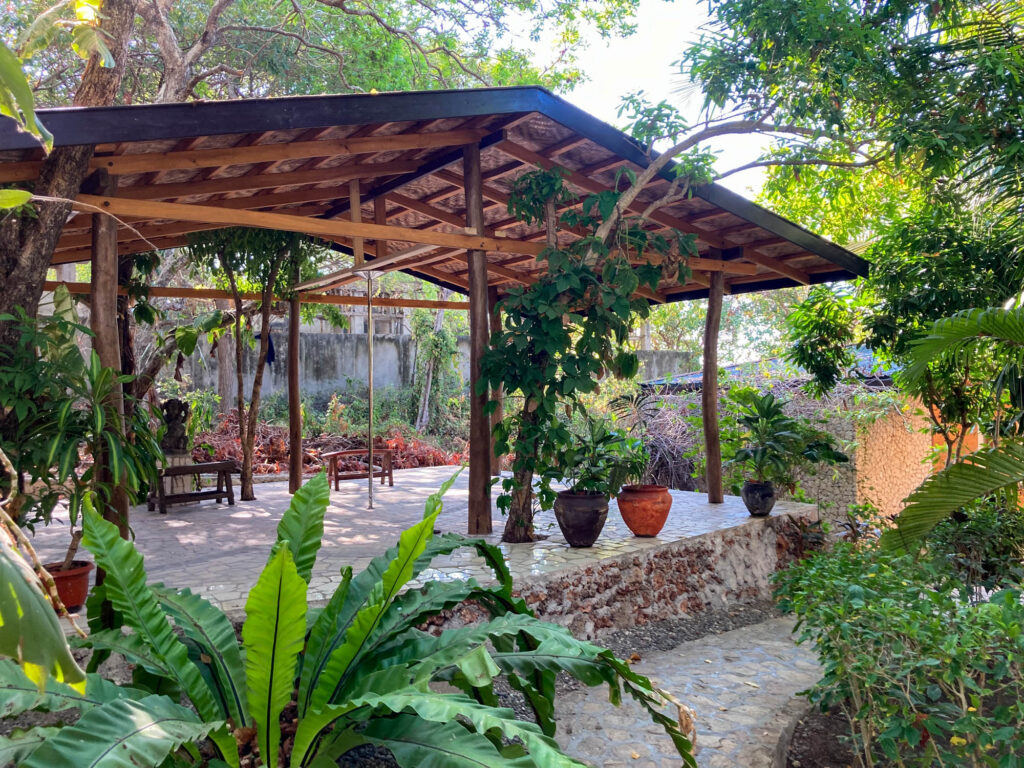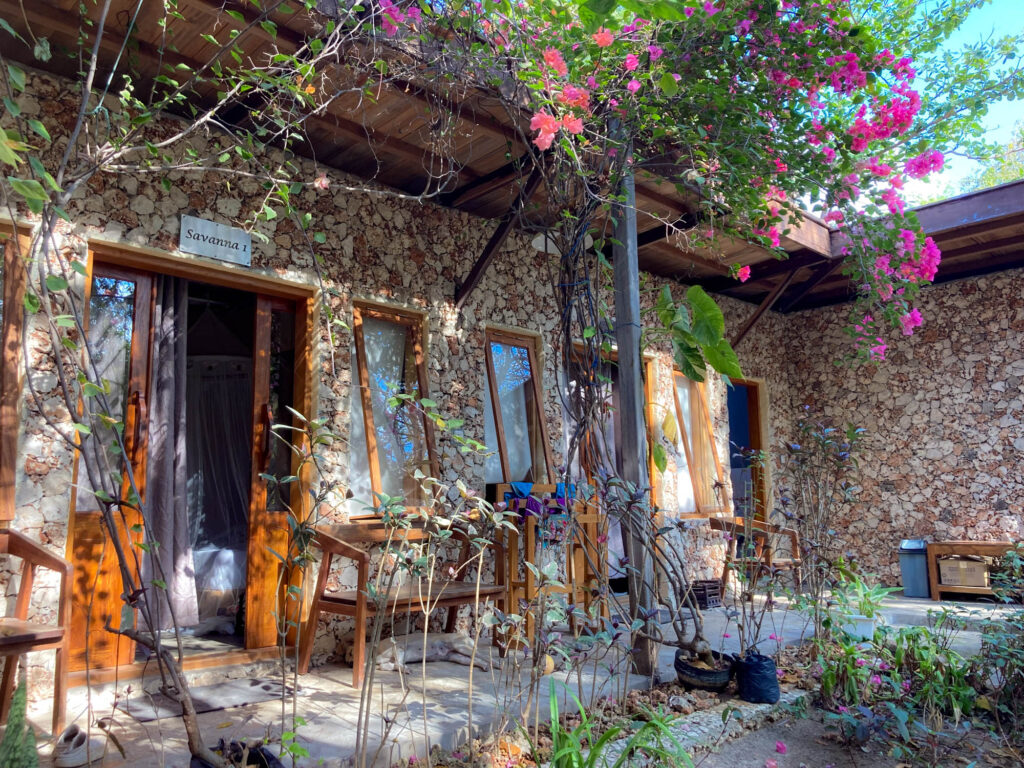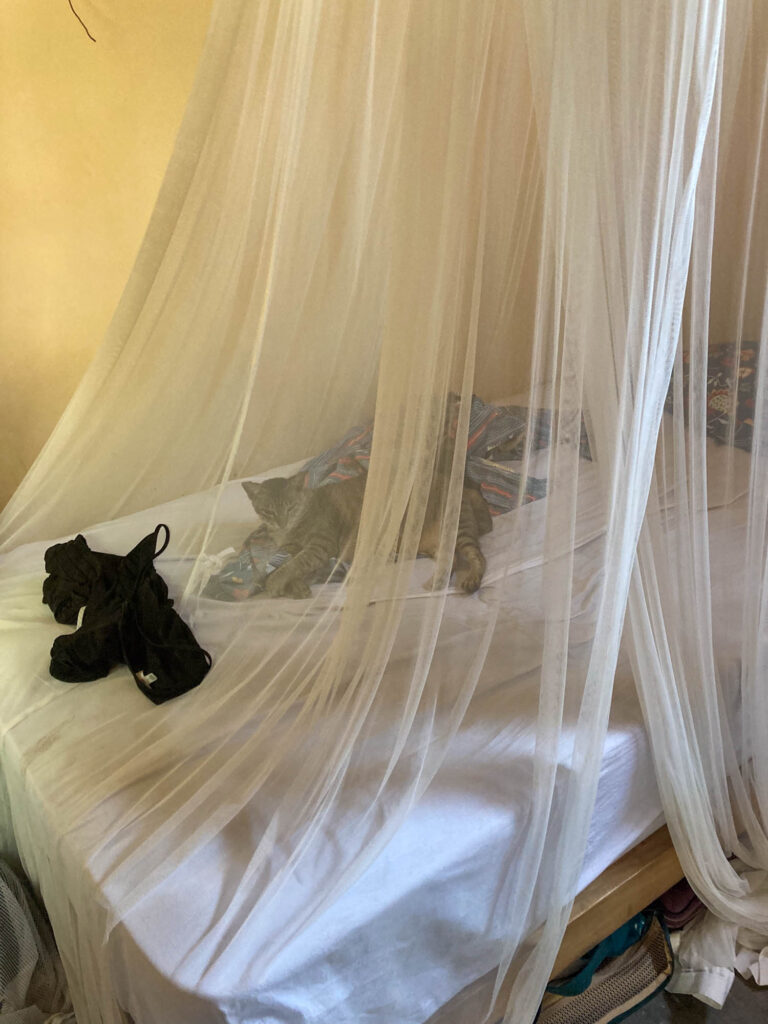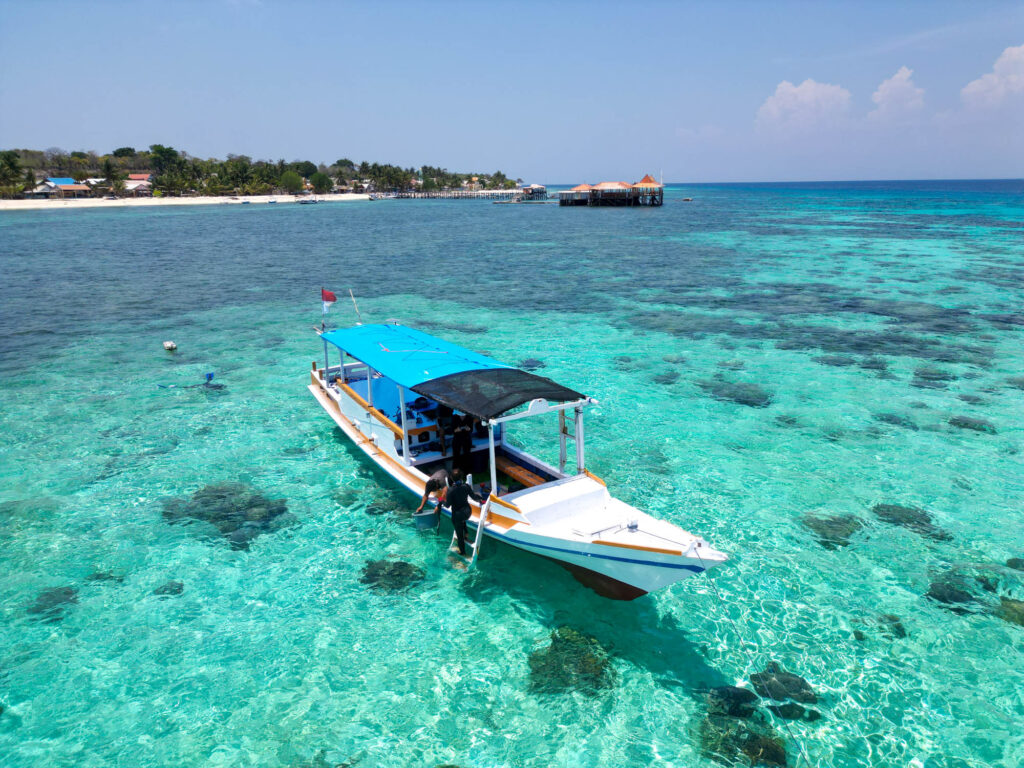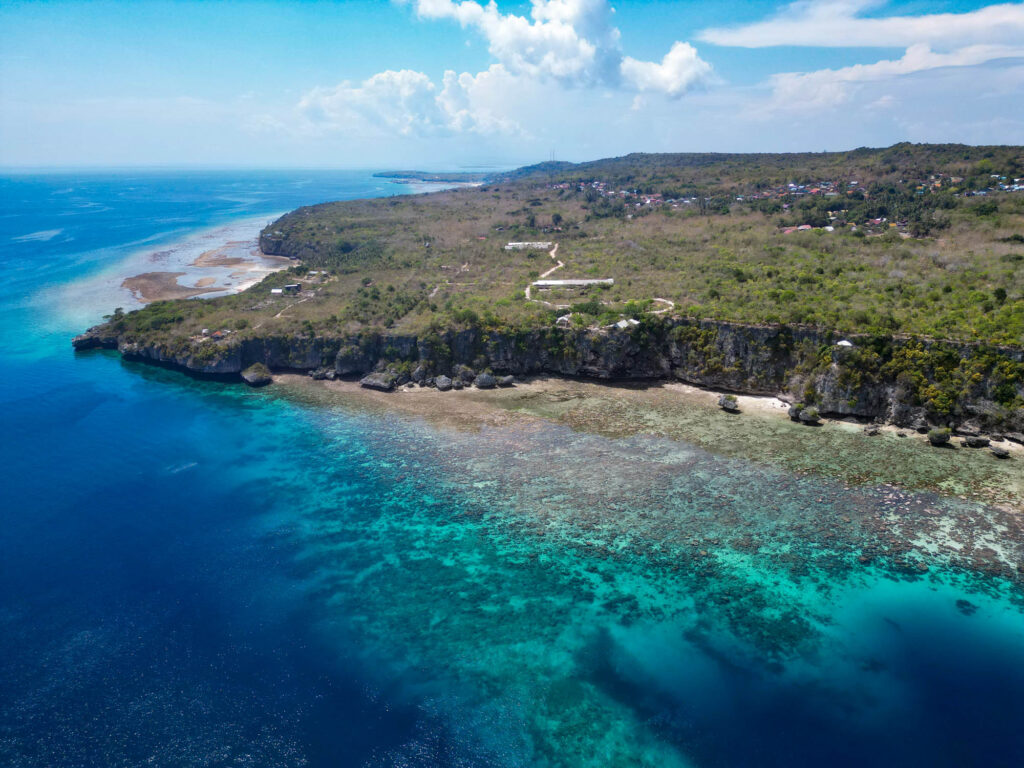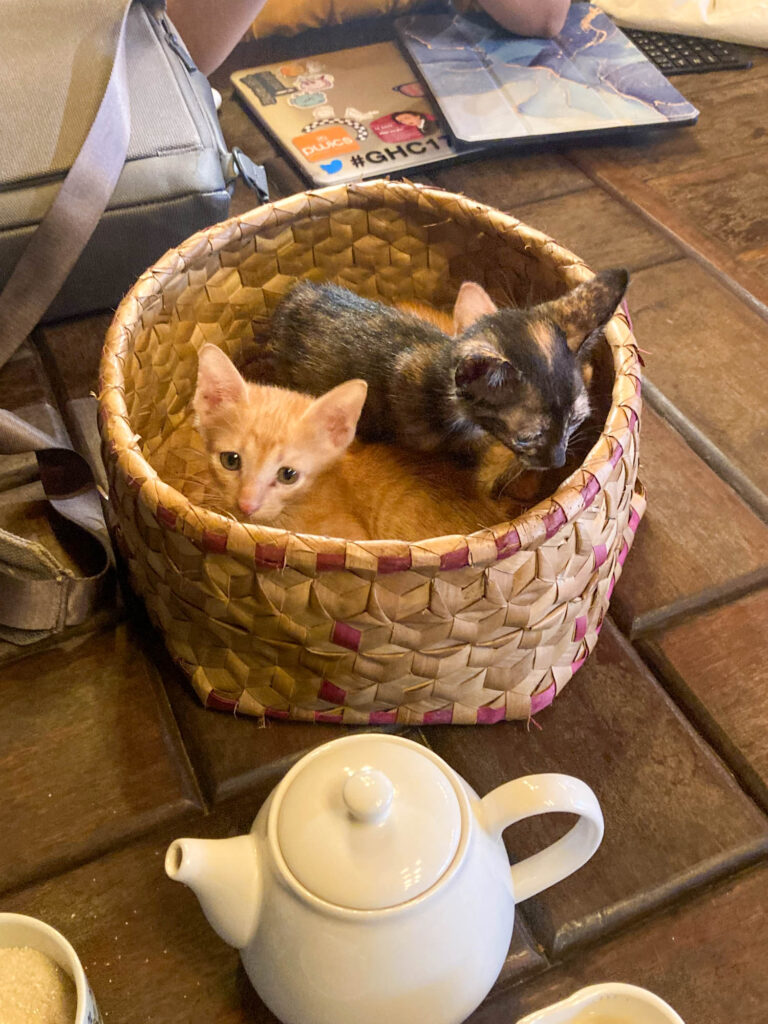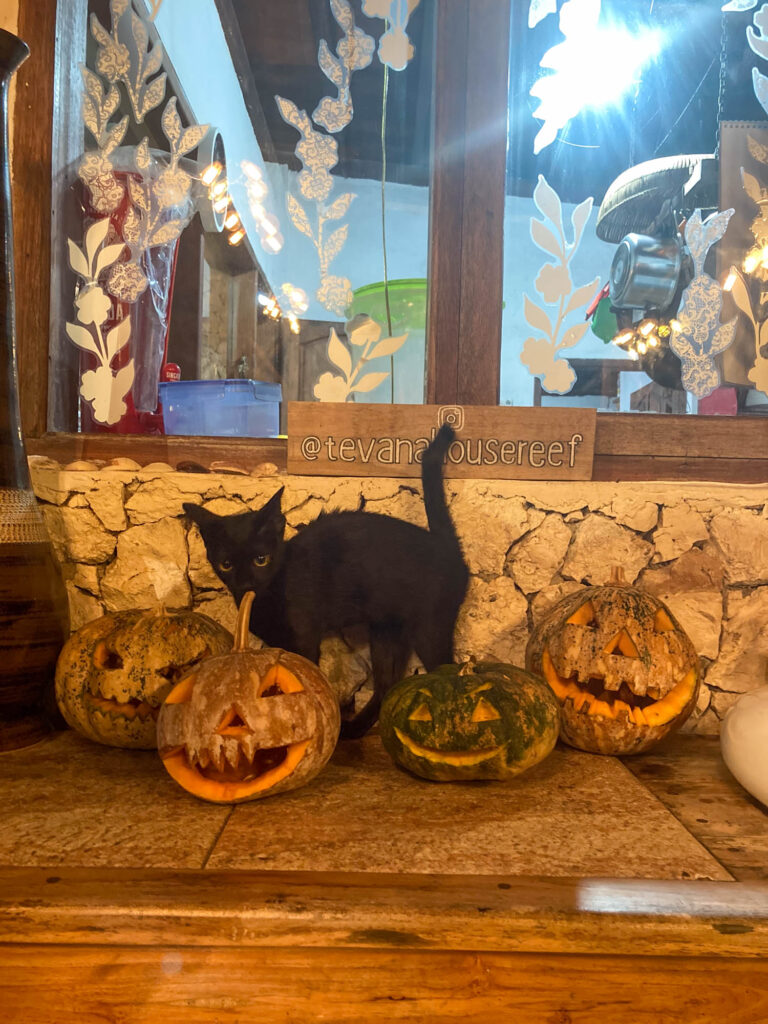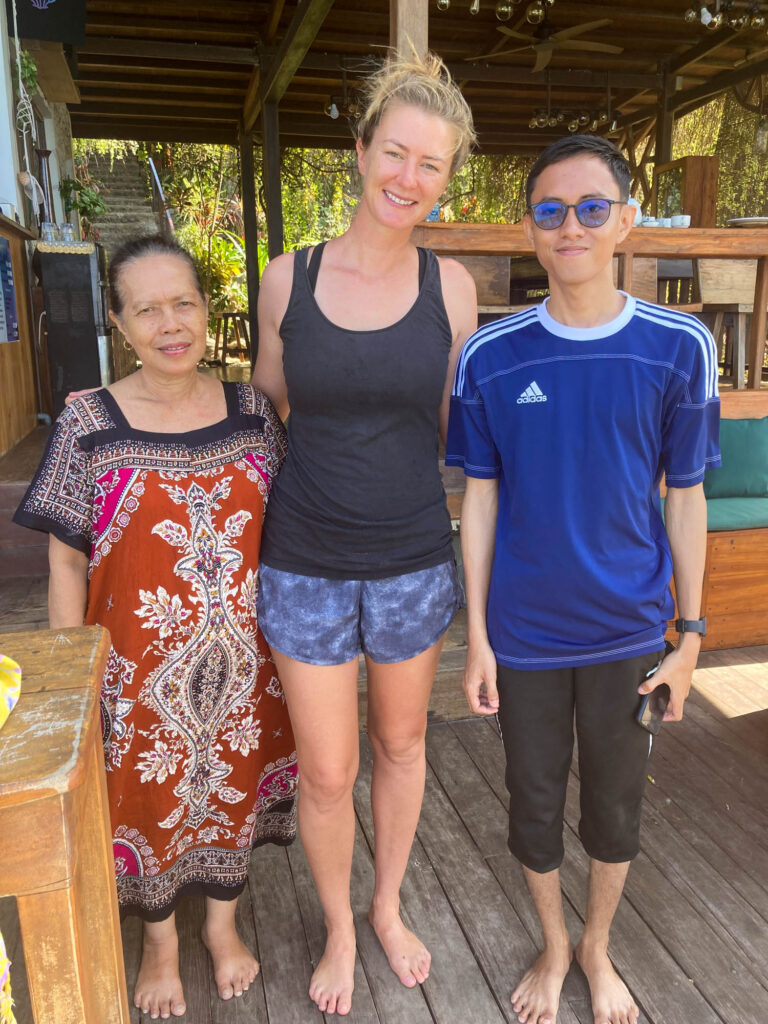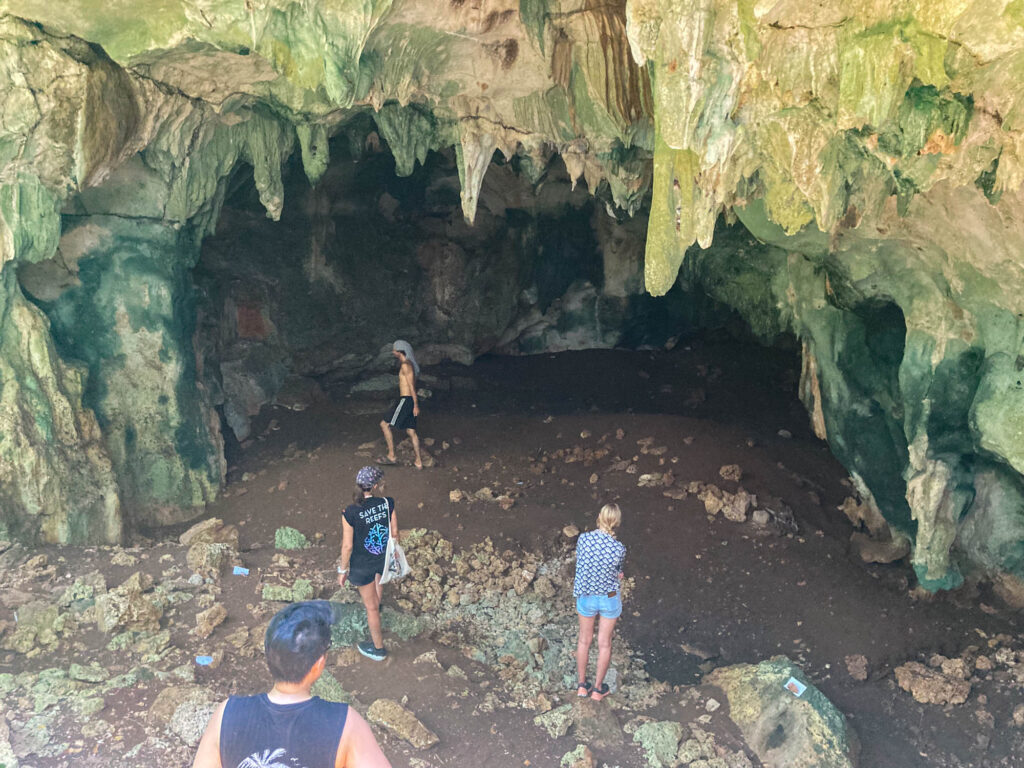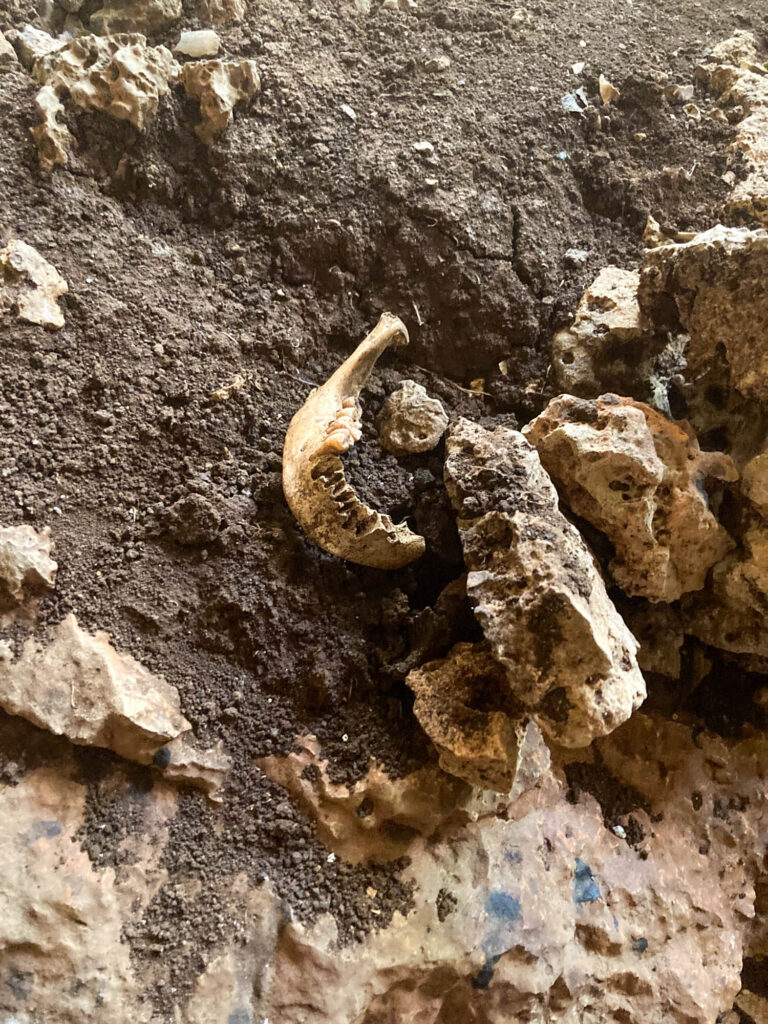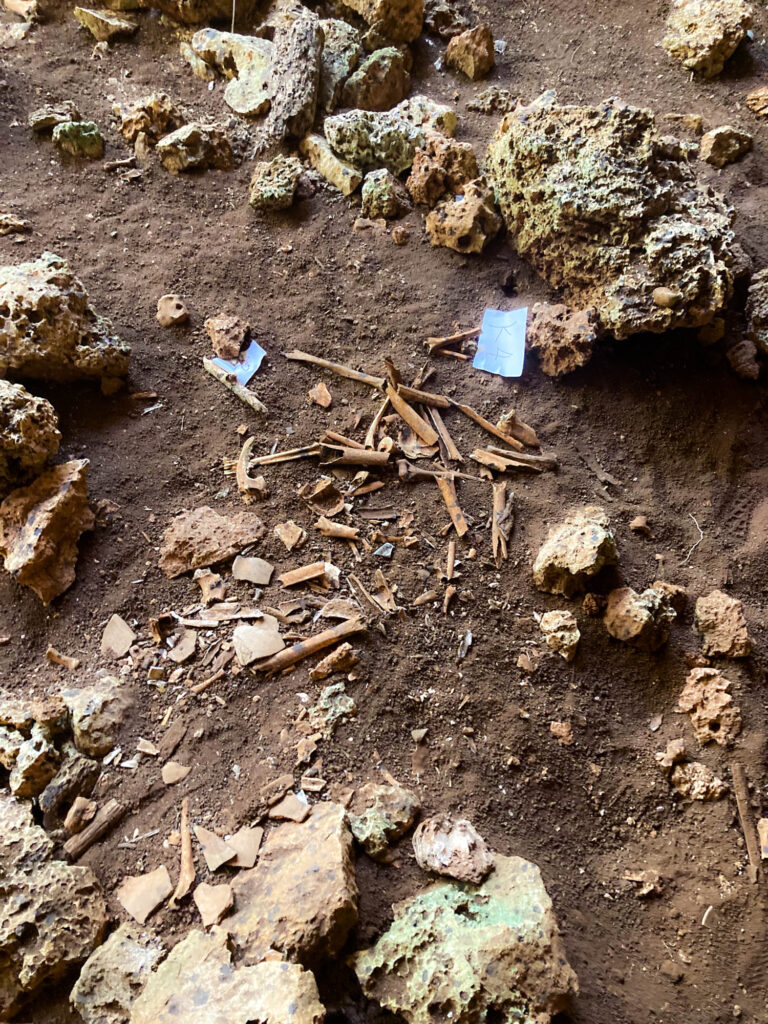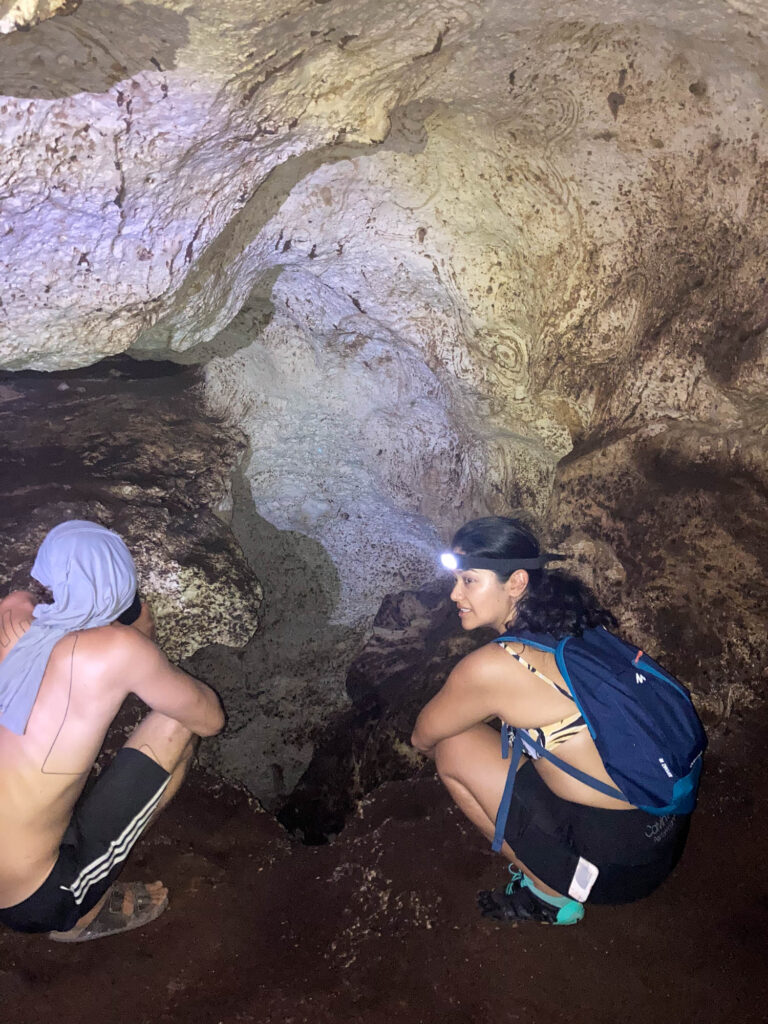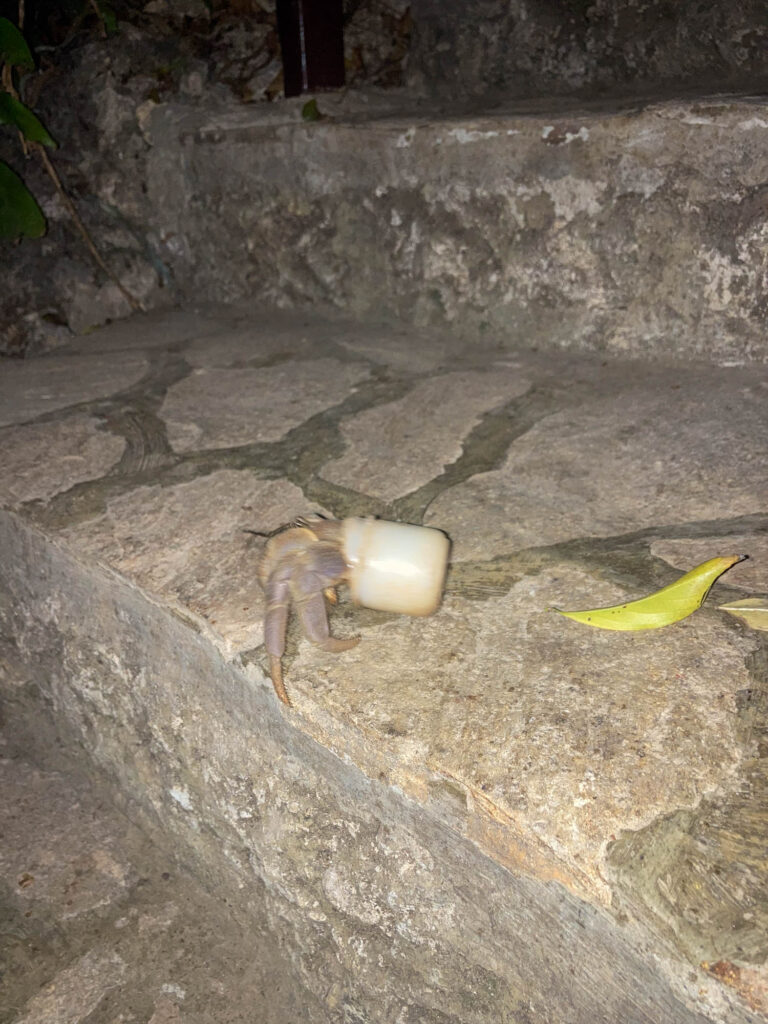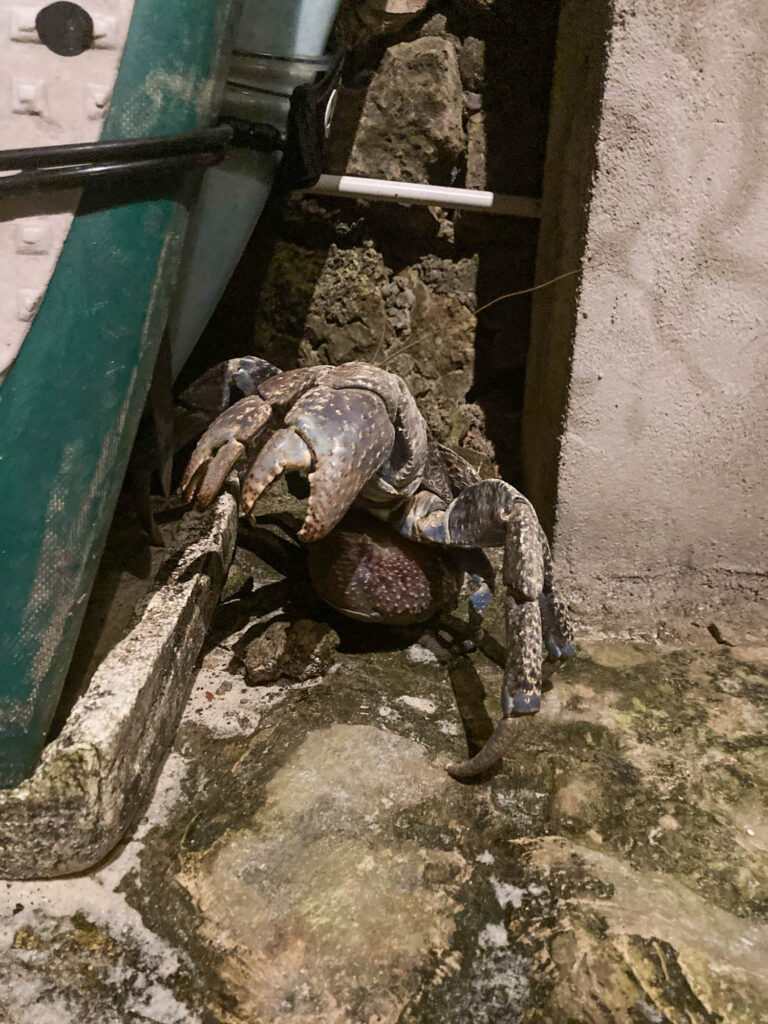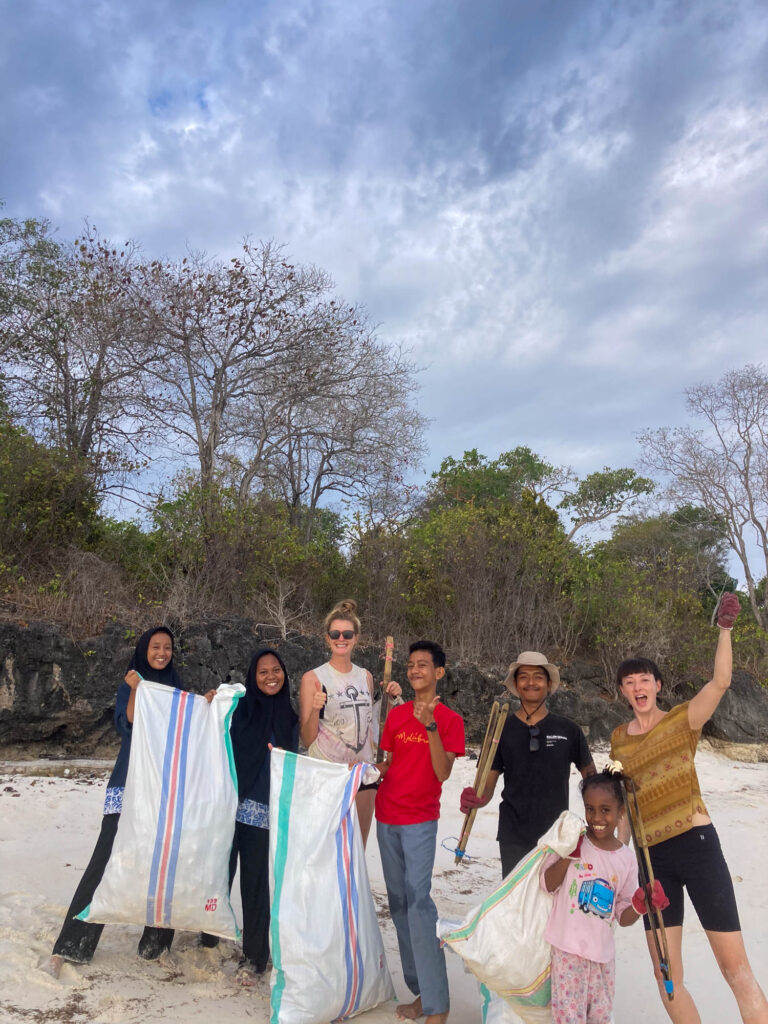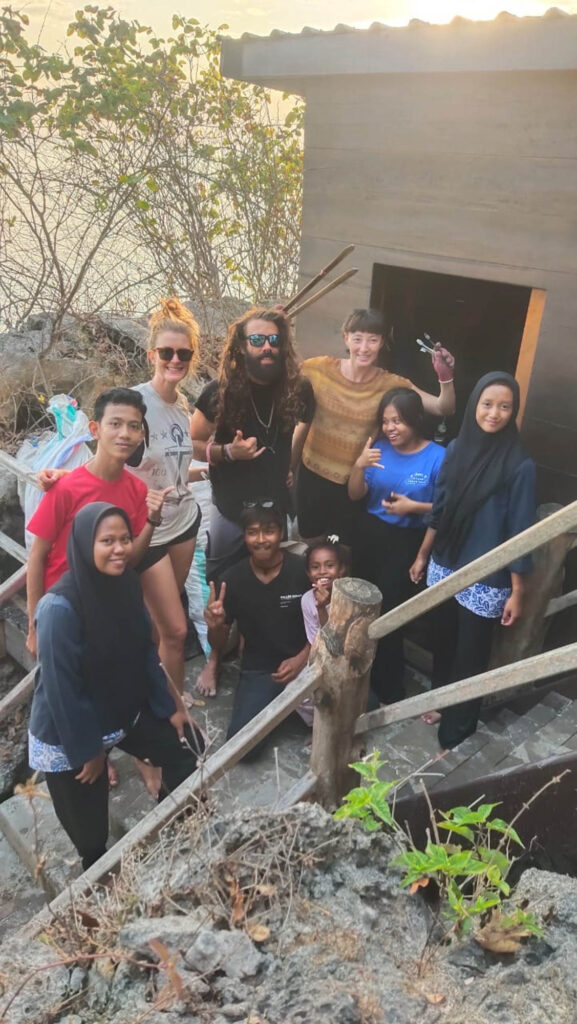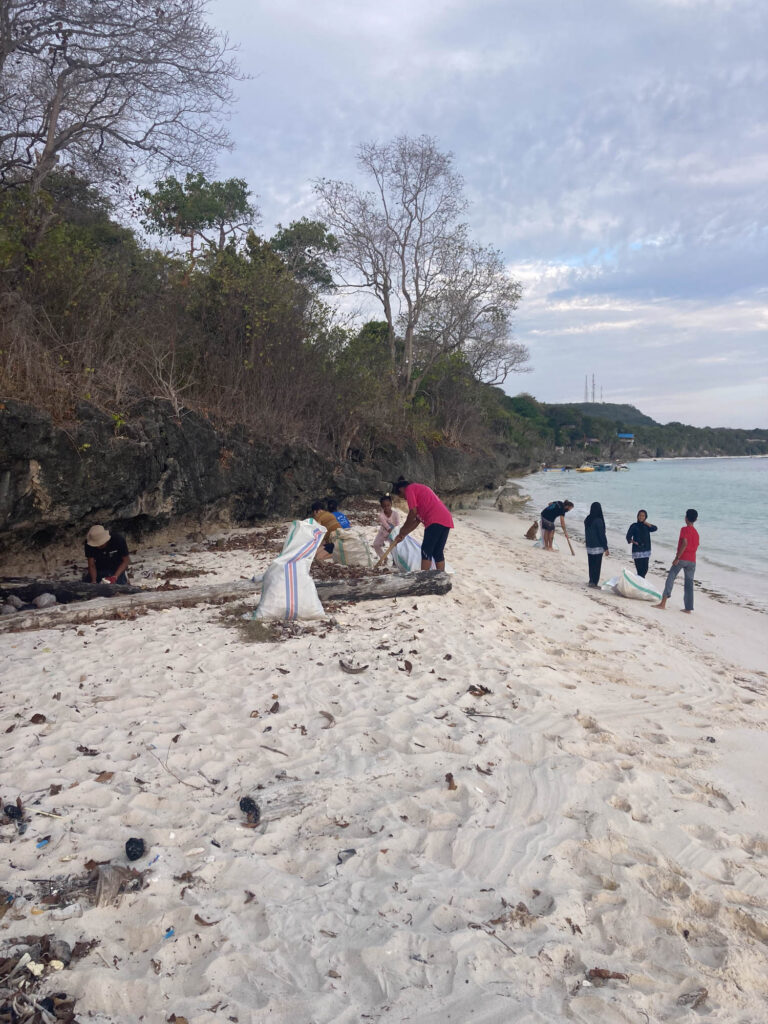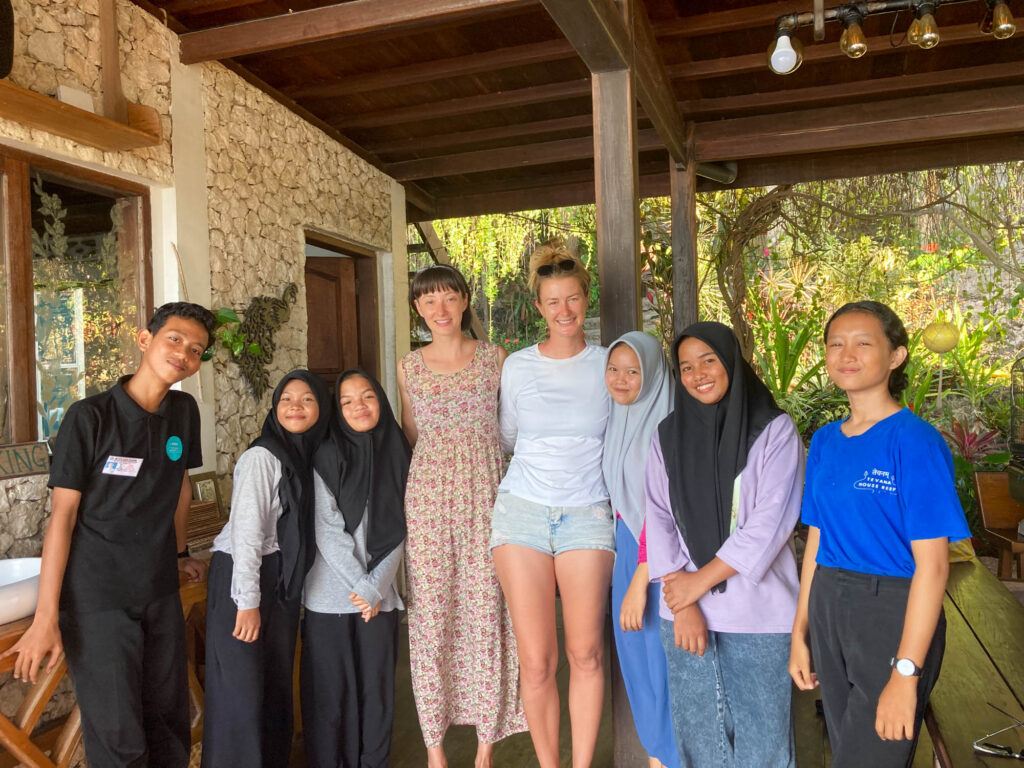After the 4-week coral restoration course wrapped up, I was equipped with all the knowledge to keep planting coral at the three different GaiaOne nurseries. The first nursery is at the house reef, just off the coast of Tevana. There is a second nursery across the sea, at a neighboring island called Liukang, and the third nursery is a short drive into town at a place called Dego Dego. The weekly schedule included 1-2 dives or snorkels per day, 5 days per week.
It was great to dive at each of these sites regularly and observe the changes over time. It was cool to recognize the local turtles and be able to identify when a new one was in town, or knowing which neighborhoods certain reef fish live in. When I first arrived, water temperatures were cold and I regularly wore a wetsuit, but as the summer approached in the southern hemisphere, the water was getting warmer and warmer. The warm water seemed to bring the right conditions to grow algae which thrived off the nutrients present in the water from poor sewage management at the local properties. We performed regular maintenance on the coral-growing structures to make sure the exposed rebar and concrete didn’t get overtaken by algae, leaving no room for the coral to spread.
The warmer weather also brought about more power outages. I heard the town got its electricity supply from hydropower for some reason, and without rainfall, power cuts became more and more common. In my entire 2-month stay, it didn’t rain once and most days were sunny and hot. The power started to go out randomly, almost every day, ranging from 4-6 hours, sometimes in the morning and sometimes in the afternoon. Or, occasionally the power would go out in random, 1-hour increments. The power consistently went out… inconsistently. For this reason, it was difficult to plan anything other than the diving. No electricity also meant no wifi, cell reception, water pressure, or even fans to stay cool on a hot day. Overall, it was a lesson in surrender and letting go, often being forced to just lay about.
Unfortunately, it’s not safe to dive on the weekends because of the boat traffic from tourists being towed on banana inflatables. Since we couldn’t go in the water, we organized beach cleanups, sometimes with the restaurant staff if they weren’t too busy with customers. Some of the new resort interns joined us one afternoon and wanted to practice their English with me, asking me about my hobbies. I said I loved to snorkel and scuba dive and asked if they had ever done the same. To which they responded that none of them knew how to swim and were terrified of the water. It may be surprising, but in a country comprised of islands with beautiful beaches and the world’s best reefs, most of its inhabitants don’t know how to swim. I asked them if they liked to ride the banana boat, and they lit up with smiles, telling me how fun it is. If only more Indonesians knew how to swim, maybe they would be more incentivized to protect their precious marine ecosystem.
We also got to explore some of the local attractions, like the different caves nestled throughout the landscape. There’s one set of caves with freshwater that reminded me of the cenotes in Mexico with amazingly clear water, perfect to swim in the sunny afternoon. There is another set of caves we explored and found some human and animal bones that were incredibly creepy.
I’d also spend time playing with the growing herd of kittens that Nori’s partner, Marco was collecting. Marco has one of the biggest hearts for animals of anyone that I’ve met and recently rescued two kittens, followed by another three, and then another one, for six in total, not counting their already full-grown cat. I loved when Marco needed to go to the city for a couple of days and I had unlimited access to kitten playtime. He would also leave me in charge of Patata, their three-legged dog, who often tried to escape when Marco wasn’t on the property. She was surprisingly sneaky and fast given her disability.
For the most part, I was perfectly content staying in the bubble of Tevana House Reef. Beautiful accommodations and good diving were all I could ask for in my last month in Southeast Asia before returning home for the holidays. After spending most of the year eating fried chicken and rice or noodles, I relished the food selection, my favorite being the dumplings and udon noodles. Not only did Tevana have an excellent food menu filled with healthy options, but two other resorts nearby also had great food and I rotated between the different locations. Fridays were Indian food night at Tevana, served family-style on banana leaves and Tuesday was Taco Tuesday at neighboring Seascapes which was the closest thing to Mexican food that I had tasted all year.
I met several people during my two month stay and I enjoyed the sense of community. One night, ten of us ventured out of the resort area and went to eat at a local restaurant near the harbor. I was chatting with one of Nori’s friends from Malaysia (and co-owner of Seascapes), and he commented Los Angeles. I asked if he had been to southern California before, responding that he went to university there. I was completely flabbergasted when he mentioned going to THE SAME university that I had gone to. We also had one year of overlap! What a small world that I would end up on the opposite side of the world, in a small town in Indonesia, and meet a Malaysian guy who went to the same university as me. Wild!
After two months in Tevana, the holidays were approaching and it was time for me to wrap up my sting in Southeast Asia and head home. But first, I had one quick stop in Fiji on my way back.
